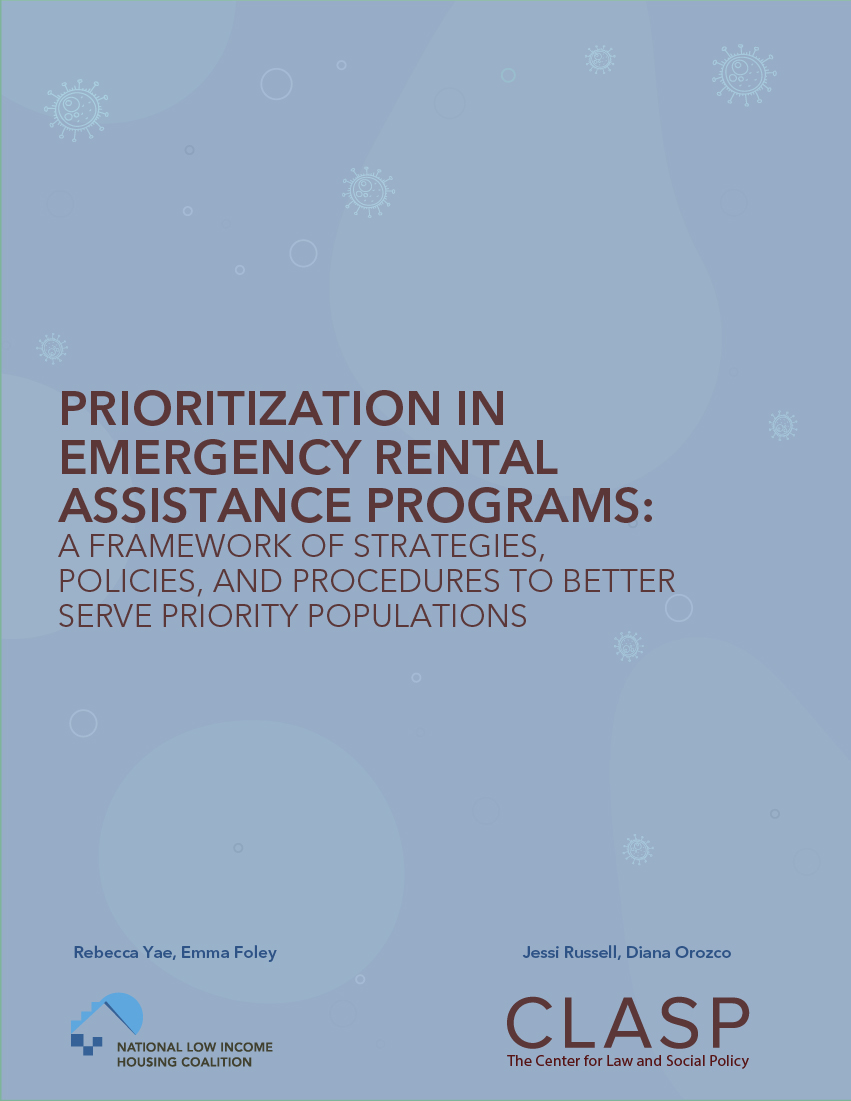NLIHC and CLASP Publish New Report: “Prioritization in Emergency Rental Assistance Programs: A Framework of Strategies, Policies, and Procedures to Better Serve Priority Populations”
Apr 26, 2021
NLIHC and the Center for Law and Social Policy (CLASP) published a new report, “Prioritization in Emergency Rental Assistance Programs: A Framework of Strategies, Policies, and Procedures to Better Serve Priority Populations.” The report outlines how emergency rental assistance programs can incorporate strategies, policies, and procedures that embed equity and give priority to renters most impacted by COVID-19 and at greatest risk of housing instability.

To maximize the number of people in priority populations (extremely low-income households, people of color, and other marginalized people most in need) receiving emergency rental assistance, program administrators must center those priority populations in the key steps of program administration: 1) determining the priority population; 2) program budgeting and setting benchmarks; 3) conducting robust tenant and landlord outreach; 4) providing ample intake support for tenants and landlords; 5) selecting applicants and providing services; and 6) monitoring and evaluation. The report includes resources and examples from state and local programs around the country to illustrate the variety of strategies used to prioritize populations.
Read the report at: https://bit.ly/2RTYwvW